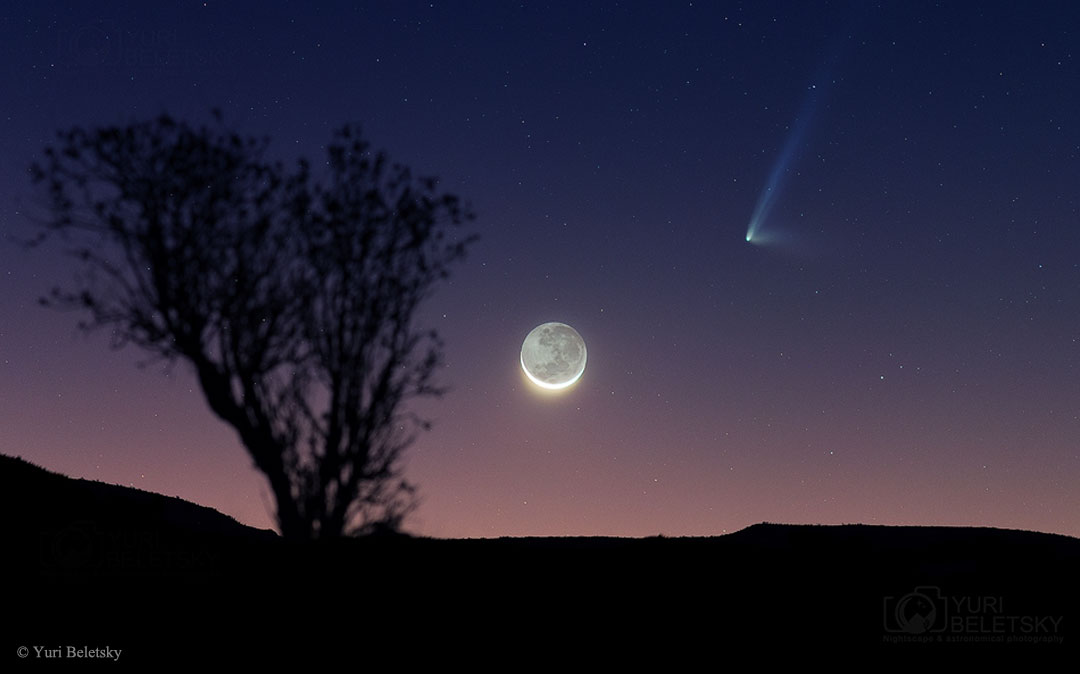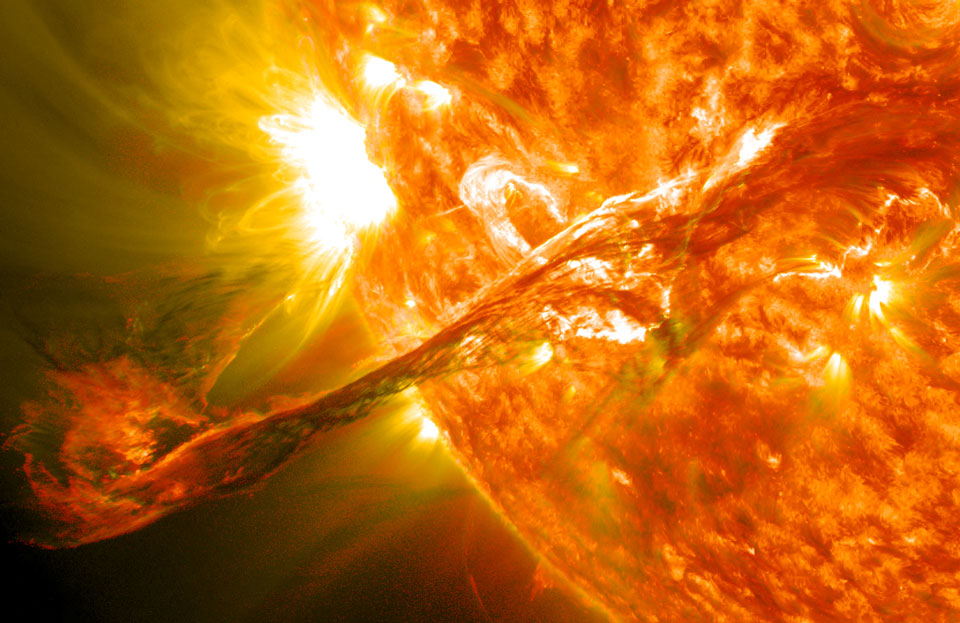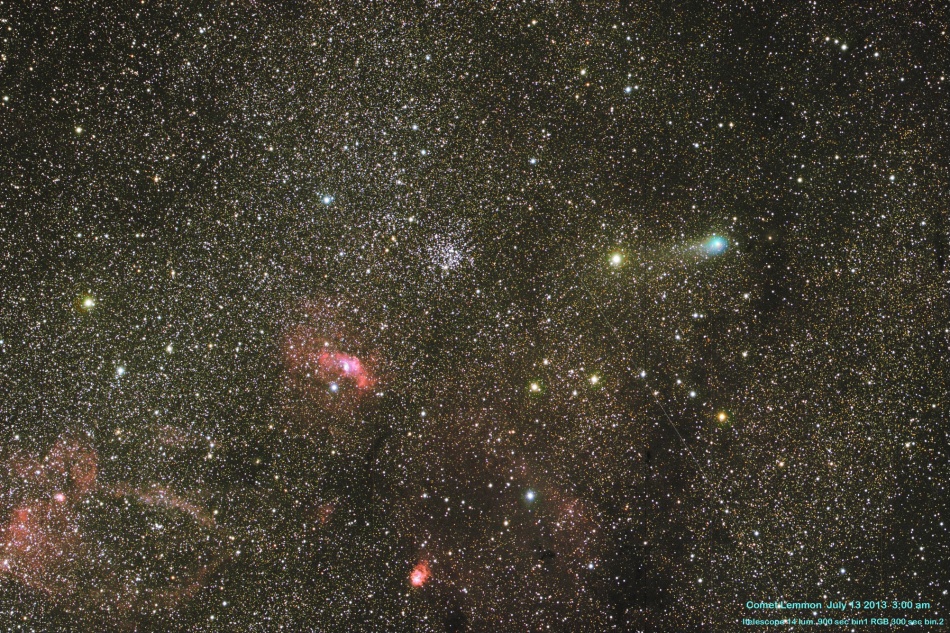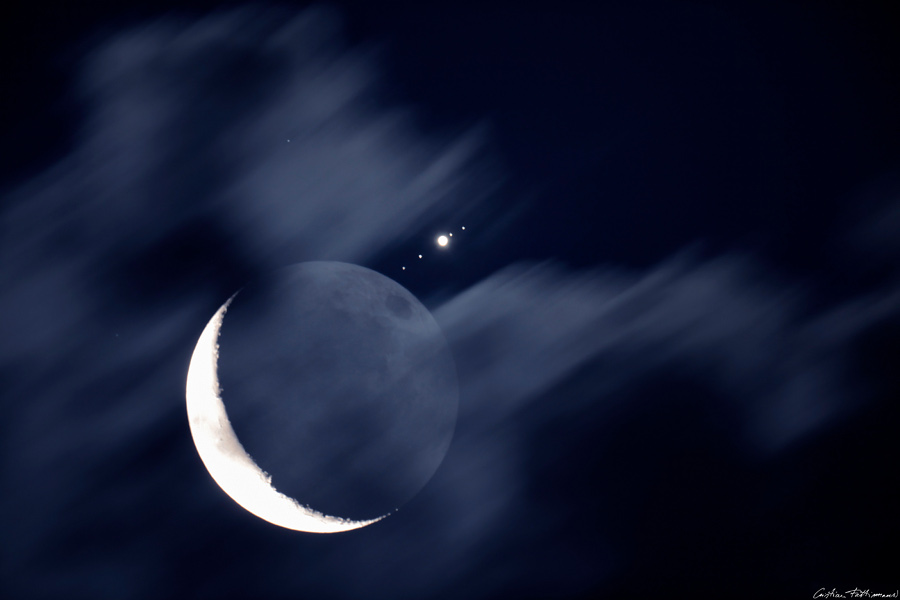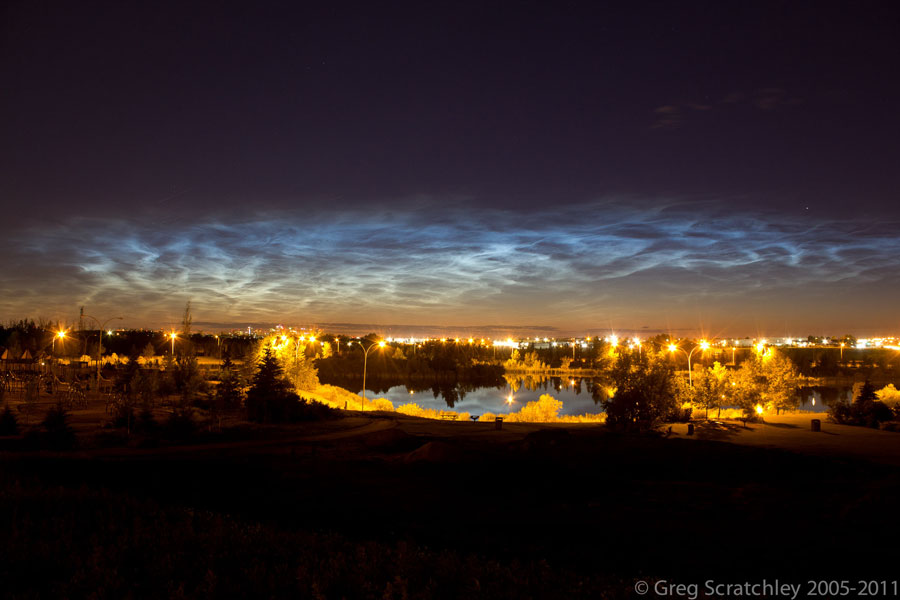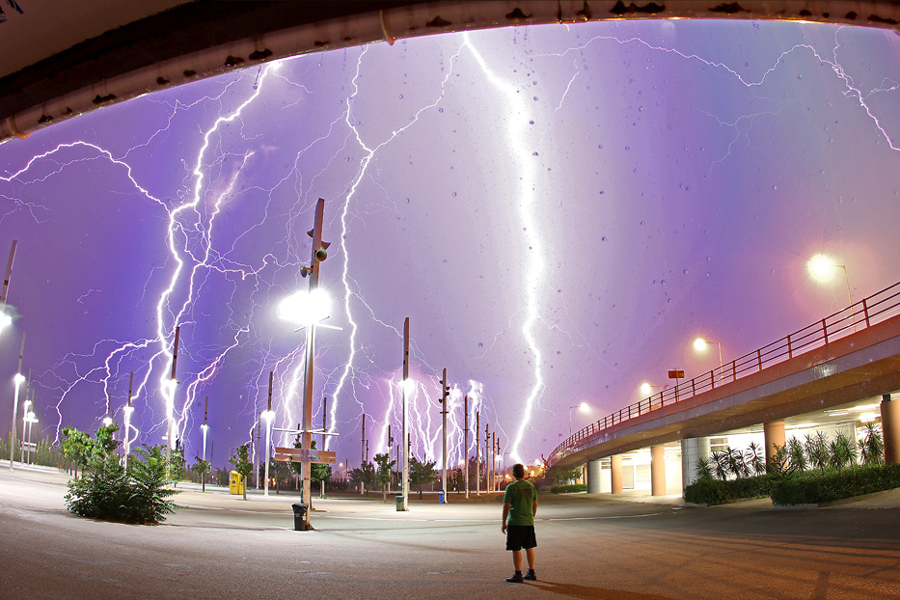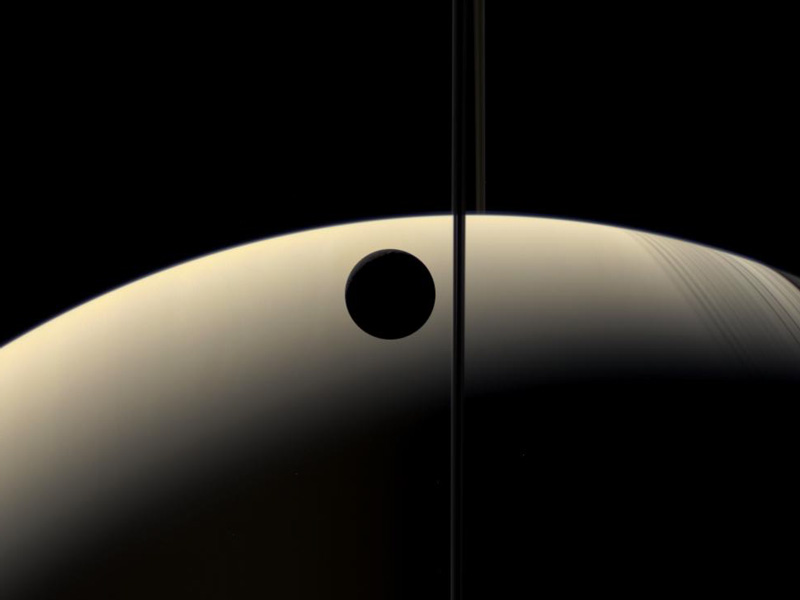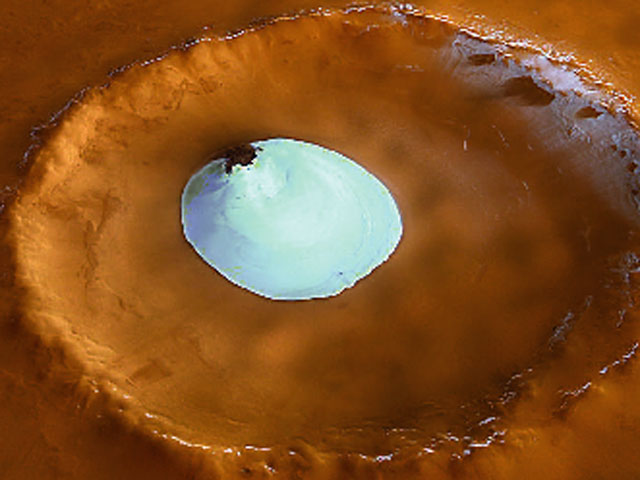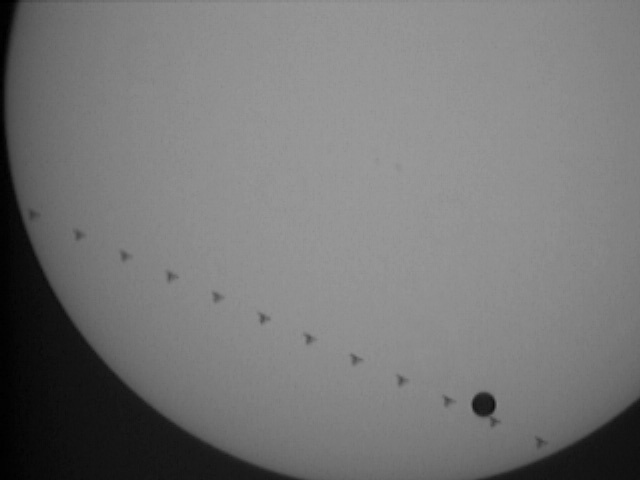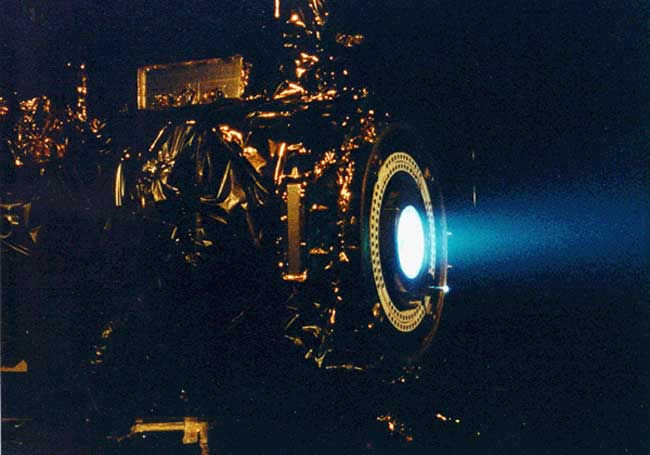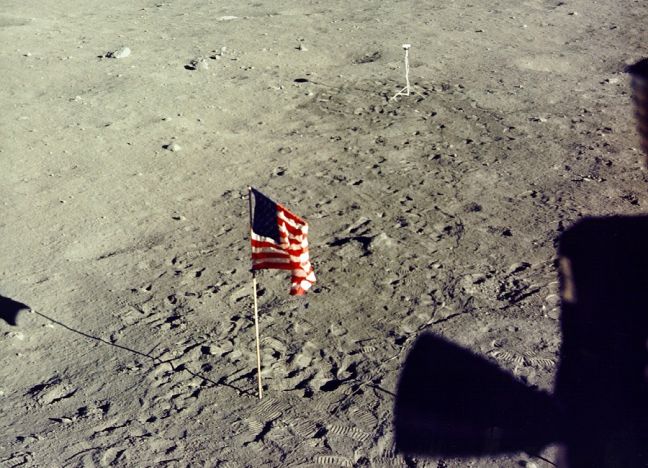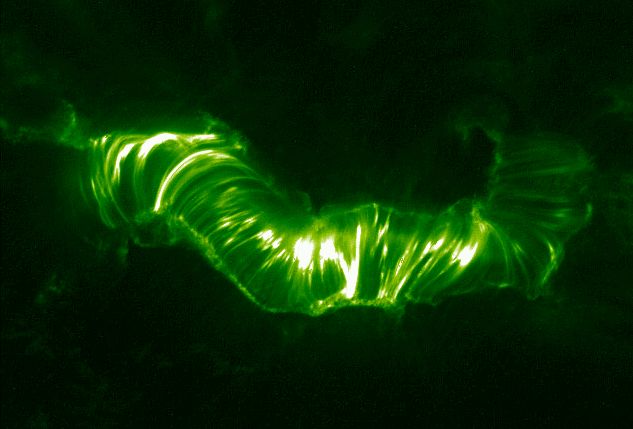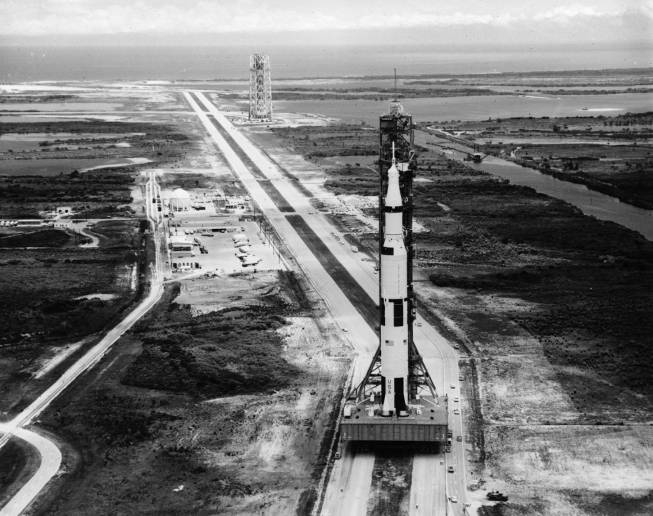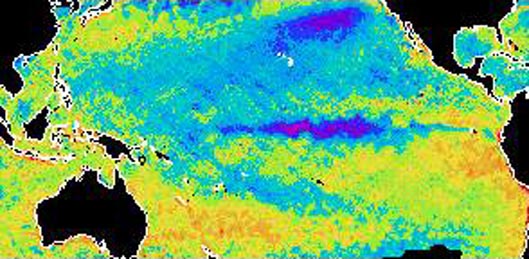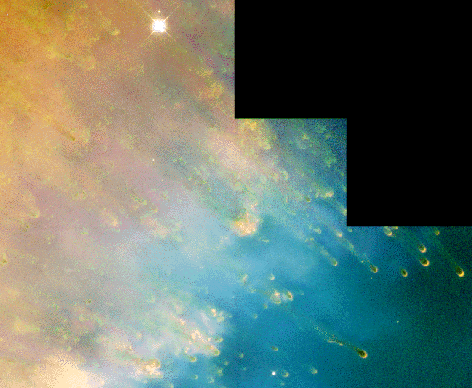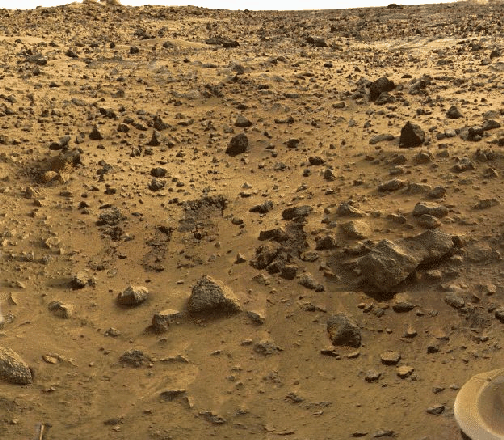| << Previous | Index | Next >> |
2015 A comet has brightened quickly and unexpectedly. Discovered last year, Comet C/2014 Q1 (PanSTARRS) is expected to be visible now for a few days to the unaided eye, just after sunset, from some locations. The comet rounded the Sun on July 6 and apparently has shed quite a bit of gas and dust. Today it is now as close as it will ever get to the Earth, which is another factor in its recent great apparent brightness and the large angular extent of its tails. In the featured image taken two days ago, Comet PanSTARRS is seen sporting a short white dust tail fading to the right, and a long blue ion tail pointing away from the recently set Sun. A crescent moon dominates the image center. Tomorrow, Comet PannSTARRS will pass only 7 degrees away from a bright Jupiter, with even brighter Venus nearby. Due to its proximity to the Sun, the comet and its tails may best be seen in the sunset din with binoculars or cameras using long-duration exposures.
2014 What's happened to our Sun? Nothing very unusual -- it just threw a filament. Toward the middle of 2012, a long standing solar filament suddenly erupted into space producing an energetic Coronal Mass Ejection (CME). The filament had been held up for days by the Sun's ever changing magnetic field and the timing of the eruption was unexpected. Watched closely by the Sun-orbiting Solar Dynamics Observatory, the resulting explosion shot electrons and ions into the Solar System, some of which arrived at Earth three days later and impacted Earth's magnetosphere, causing visible aurorae. Loops of plasma surrounding an active region can be seen above the erupting filament in the ultraviolet image. Over the past week the number of sunspots visible on the Sun unexpectedly dropped to zero, causing speculation that the Sun has now passed a very unusual solar maximum, the time in the Sun's 11-year cycle when it is most active.
2013 Now sweeping high above the ecliptic plane, Comet Lemmon has faded dramatically in planet Earth's night sky as it heads for the outer solar system. Some 16 light-minutes (2 AU) from the Sun, it still sports a greenish coma though, posing on the right in this 4 degree wide telescopic view from last Saturday with deep sky star clusters and nebulae in Cassiopeia. In fact, the rich background skyscape is typical within the boundaries of the boastful northern constellation that lie along the crowded starfields of the Milky Way. Included near center is open star cluster M52 about 5,000 light-years away. Around 11,000 light-years distant, the red glowing nebula NGC 7635 below and left of M52 is well-known for its appearance in close-up images as the Bubble Nebula. But the fading Comet Lemmon is not the only foreground object on the scene. A faint streak on the right is an orbiting satellite caught crossing through the field during the long exposure, glinting in the sunlight and winking out as it passes into Earth's shadow.
2012 Skygazers around planet Earth enjoyed the close encounter of planets and Moon in July 15's predawn skies. And while many saw bright Jupiter next to the slender, waning crescent, Europeans also had the opportunity to watch the ruling gas giant pass behind the lunar disk, occulted by the Moon as it slid through the night. Clouds threaten in this telescopic view from Montecassiano, Italy, but the frame still captures Jupiter after it emerged from the occultation along with all four of its large Galilean moons. The sunlit crescent is overexposed with the Moon's night side faintly illuminated by Earthshine. Lined up left to right beyond the dark lunar limb are Callisto, Ganymede, Jupiter, Io, and Europa. In fact, Callisto, Ganymede, and Io are larger than Earth's Moon, while Europa is only slightly smaller.
2011 Sometimes it's night on the ground but day in the air. As the Earth rotates to eclipse the Sun, sunset rises up from the ground. Therefore, at sunset on the ground, sunlight still shines on clouds above. Under usual circumstances, a pretty sunset might be visible, but unusual noctilucent clouds float so high up they can be seen well after dark. Normally too dim to be seen, they may become visible at sunset during late summer when illuminated by sunlight from below. Noctilucent clouds are the highest clouds known and thought to be part of polar mesospheric clouds. Pictured above earlier this month, a network of noctilucent clouds cast an eerie white glow after dusk, above the the city of Edmonton, in Alberta, Canada. Much about noctilucent clouds has been discovered only over the past few years, while how they form and evolve remains a topic of active research.
2010 Have you ever watched a lightning storm in awe? Join the crowd. Oddly, nobody knows exactly how lightning is produced. What is known is that charges slowly separate in some clouds causing rapid electrical discharges (lightning), but how electrical charges get separated in clouds remains a topic of much research. Lightning usually takes a jagged course, rapidly heating a thin column of air to about three times the surface temperature of the Sun. The resulting shock wave starts supersonically and decays into the loud sound known as thunder. Lightning bolts are common in clouds during rainstorms, and on average 6,000 lightning bolts occur between clouds and the Earth every minute. Pictured above, an active lightning storm was recorded over Athens, Greece earlier this month.
2009 A human first set foot on another world on July 20, 1969. This world was Earth's own Moon. In honor of today's 40th anniversary, NASA has released a digitally restored video of this milestone in human history. Pictured above is Neil Armstrong preparing to take the historic first step. On the way down the Lunar Module ladder, Armstrong released equipment which included the television camera that recorded this fuzzy image. Pictures and voice transmissions were broadcast live to a world wide audience estimated at one fifth of the world's population. The Apollo Moon landings have since been described as the greatest technological achievement the world has known.
2008 Soft hues, partially lit orbs, a thin trace of the ring, and slight shadows highlight this understated view of the majestic surroundings of the giant planet Saturn. Looking nearly back toward the Sun, the robot Cassini spacecraft now orbiting Saturn captured crescent phases of Saturn and its moon Rhea in color a few years ago. As striking as the above image is, it is but a single frame from a recently released 60-frame silent movie where Rhea can be seen gliding in front of its parent world. Since Cassini was nearly in the plane of Saturn's rings, the normally impressive rings are visible here only as a thin line across the image center. Although Cassini has now concluded its primary mission, its past successes and opportunistic location have prompted NASA to start a two-year Equinox Mission, further exploring not only Saturn's enigmatic moons Titan and Enceladus, but Saturn herself as her grand rings tilt right at the Sun in August 2009.
2007 On July 20, 1969, Apollo 11 astronauts Neil Armstrong and Edwin "Buzz" Aldrin became the first to walk on the Moon. This panorama of their landing site sweeps across the magnificent desolation of the Moon's Sea of Tranquility, with their Lunar Module, the Eagle, in the background at the far left. East Crater, about 30 meters wide and 4 meters deep, is on the right (scroll right), and was so named because it is about 60 meters east of the Lunar Module. Armstrong had piloted the Eagle safely over the crater. Near the end of his stay on the lunar surface Armstrong strayed far enough from the Lunar Module to take the pictures used to construct this wide-angle view, his shadow appearing at the panorama's left edge. The object near the middle foreground is a stereo close-up camera.
2006
[imghover6=http://apod.nasa.gov/apod/image/0607/wi ... ss_008.jpg]http://apod.nasa.gov/apod/image/0607/wi ... 8label.jpg[/imghover6]Credit & Copyright: Jerry Lodriguss (Catching the Light)
2005
2004 On June 8, Venus was not the only celestial object to pass in front of the Sun. A few well-situated photographers caught the International Space Station also crossing the Sun simultaneously. Pictured above is a unique time-lapse image of the unprecedented double transit, a rare event that was visible for less than a second from a narrow band on Earth. The above image is a combination of 12 frames taken 0.033 seconds apart and each themselves lasting only 1/10,000 th of a second. The image was taken from the small village of Stupava in Slovakia. The next time Venus will appear to cross the Sun from Earth will be in 2012.
2003 Space travel entered the age of the ion drive in 1998 with the launch of Deep Space 1, a NASA mission designed primarily to test new technologies. Although the ion drive on Deep Space 1 provided acceleration much smaller than we feel toward Earth, it gradually gave the spacecraft the speed it needed to travel across our Solar System. The propulsion drive worked by ionizing xenon atoms with power provided by large panels that collect sunlight. As these ions were expelled by a strong electric field out the back, the spacecraft slowly gained speed. Pictured above, hot blue ions emerge from a prototype drive that was successfully tested at JPL in 1997. Deep Space 1 successfully zoomed past asteroid 9969 Braille in July 1999 and then Comet Borrelly in September 2001, then obtaining the most detailed photograph ever taken of a comet nucleus. The spacecraft was retired in December 2001
2002 On July 20th, 1969, humans first set foot on the Moon. Taken from a window of their Apollo 11 lunar module, the Eagle, this picture shows the footprints in the powdery lunar soil made by astronauts Neil Armstrong and Buzz Aldrin. It has been estimated that one billion people on planet Earth watched Armstrong step from the lander onto the surface of another world, making this live transmission one of the highest rated television shows ever. In the foreground at right, a rocket nozzle on the side of the Eagle is seen in silhouette, while beyond an unfurled United States flag is the television camera, remounted on a stand to better view the landing area. The Apollo missions to the Moon have been described as the result of the greatest technological mobilization in history.
2001 Like a picture from a galactic Just So Story, the Elephant's Trunk Nebula winds through the emission nebula and young star cluster complex IC 1396, in the high and far off constellation of Cepheus. Bright swept-back ridges compose the suggestive form, outlining pockets of interstellar dust and gas. Such embedded dark, comet-shaped clouds contain the raw material for star formation. About 3,000 light-years distant, the relatively faint IC 1396 complex covers a much larger region on the sky than shown here, with an apparent width of more than 10 full moons. This close-up telescopic view is a delightful color mosaic of two digital images intended to follow the 'satiable curious cosmic trunk.
2000 On July 14th, solar active region 9077 (AR9077) produced a massive flare. The event also blasted an enormous cloud of energetic charged particles toward planet Earth, triggering magnetic storms and dramatic auroral displays. This striking close-up of AR9077 was made by the orbiting TRACE satellite shortly after the flare erupted. It shows million degree hot solar plasma cooling down while suspended in an arcade of magnetic loops. The false-color image covers an expansive 230,000 by 170,000 kilometer area on the Sun's surface (Earth's diameter is about 12,800 kilometers) and was recorded in extreme ultraviolet light. Collectively resembling a popular "slinky" toy, the enormous loops are actually magnetic field lines which trap the glowing, cooling plasma above the relatively dark solar surface. After the flare, AR9077's activity decayed as it was carried farther across the Earth-facing hemisphere of the Sun by solar rotation. Active regions like AR9077 appear as groups of dark sunspots in visible light.
1999 On July 20, 1969, only four days after leaving planet Earth 250,000 miles behind them, Apollo 11 astronauts landed on the moon - the first humans to reach another celestial body. But the Saturn V rocket which took them there actually "began" the journey two months before traveling at a blinding speed of one mile per hour. Seen here in a dramatic aerial view, the giant moon rocket rides on top of a slow moving crawler-transporter vehicle toward Kennedy Space Center's launch complex 39 pad A. The NASA History Office's new Apollo web site celebrates the 30th anniversary of the first moon landing with this and other images, documents, and collections of links commemorating this profound achievement and the people who made it possible.
1998 Goodbye El Niño. Hello La Niña? Scientists are watching to see if an evolving pool of relatively cool water in the mid-Pacific Ocean will develop into a full "La Niña". Over the past several months, the water temperature in the Equatorial Pacific Ocean has been doing a flip-flop. From being slightly warmer than normal in the winter, a condition called El Niño, much of this water is now slightly colder than normal, a condition that might develop into a La Niña - with global weather consequences. Pictured above is a false-color satellite image showing relative temperature in Equatorial Pacific taken earlier this month. The blue color indicates relatively cool water. Since little has changed since last month, it is possible that the situation has stabilized. The last two La Nina years were 1988 and 1995.
1997 While exploring the inner edge of the Helix Nebula with the Hubble Space Telescope's Wide Field Planetary Camera 2, astronomers were able to produce this striking image - rich in details of an exotic environment. This planetary nebula, created near the final phase of a sun-like star's life, is composed of tenuous shells of gas ejected by the hot central star. The atoms of gas, stripped of electrons by ultraviolet radiation from the central star, radiate light at characteristic energies allowing specific chemical elements to be identified. In this image, emission from nitrogen is represented as red, hydrogen emission as green, and oxygen as blue. The inner edge of the nebula (the direction to the central star) is toward the bottom right. Clearly visible close to the inner edge are finger shaped "cometary knots".
1996 On July 20, 1976, NASA's Viking 1 lander become the first spacecraft to land on Mars, followed weeks later by its twin robot explorer, the Viking 2 lander. Operating on the Martian surface into the early 1980s, the Vikings took thousands of pictures, conducted sophisticated chemical searches for life and studied the Martian weather and geology. In the dramatically detailed image above, a field of rocks and boulders is viewed from the Viking 1 landing sight on Chryse Planitia (the Plain of Chryse). Viking 1's dusty foot pad is just visible at the lower right. The image was created by combining high resolution black and white images with lower resolution color images of the same area. NASA is planning to continue its extremely productive and well chronicled exploration of the mysterious Red Planet with the Mars Global Surveyor and the Mars Pathfinder missions. What's Mars like today?
1995 The Mariner Valley, also known as the Valles Marineris canyon system, appears in this mosaic of images from NASA's Viking spacecraft as a huge gouge across the red planet. This "Grand Canyon" of Mars is about 2500 miles long and up to 4 miles deep. By comparison, the Earth's Grand Canyon is less than 500 miles long and 1 mile deep.
| << Previous | Index | Next >> |
